In simple terms, it means solar photovoltaics, and it's all about catching the sun's energy and transforming it into usable electricity. But if you want a more detailed answer than this, you'll need to continue reading!
So, you've heard of solar panels? They've been around in the UK for decades, but it's only in the last ten years or so that people have really taken notice as the urgent need for renewable energy has become painfully apparent.
But what exactly do you know? It's likely that what you have learned in the past is now out of date, as the technology involved has advanced dramatically in just a few short years.
It's also likely that your interest isn't purely academic; you don't just want to know how it works - you're more interested in how it can save you money and help you reduce your environmental impact. Is that a fair assessment? For most people, this will ring true.
That's why we at Skylamp Solar have decided to put together all the information you might need in a comprehensive and easy-to-follow guide. We'll cover all the major points to help you understand the subject and to assess whether it's a good idea for your home or business.
And in the majority of cases, the answer is yes!
Let's cut to the chase - you want to know about the financial side first and foremost, and that's understandable. So, without further delay, let's look at how solar energy can help you as an individual.
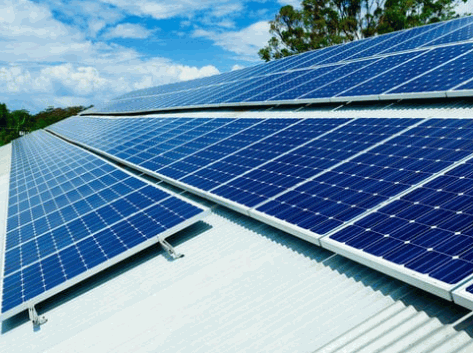
We'll go into these points in more detail further along, but you have to admit, a solar PV system looks like a sensible investment so far, right?
Now we've got that settled, we'll dig deeper into solar energy and find out what solar PV is all about.
Related service: “Solar PV Installation”.
Here's where it gets a bit complicated. Most people have been at least vaguely aware of solar panels for a while, but then suddenly the term photovoltaic cells began to be thrown around.
But aren't they one and the same thing? Well, no, they're not.
As more time and money were invested in renewable energy technologies, improvements and advances were made, resulting in the creation of solar photovoltaics. We won't dwell too much on the difference between the two, as we cover this subject in full in another blog (The difference between solar panels and photovoltaic panels).
What we can say is that the older style solar panels were used to heat water or air, and are referred to as solar thermal. In contrast, a solar PV system converts solar radiation into electricity that can be used in the building or sold back to the national grid.
While the energy source is the same, the technology involved is very different.
To recap:
And that's where we get the 'PV' from, as it refers to the photovoltaic cells.
All clear so far? Great!
Now let's move on to the technical side and see what makes these amazing gadgets tick.
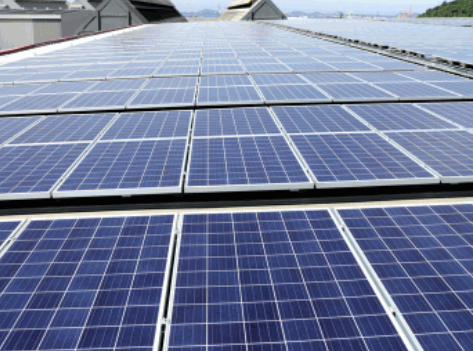
Basically, sunlight hits a row of panels that transform it into electricity. Sounds like magic, doesn't it? But plants have been doing a similar thing for millions of years! Their leaves are like tiny factories converting sunlight into food - we've essentially copied plants as they're ahead of us in terms of renewable energy.
So, think of those solar panels as leaves on a tree, reaching up to the sun, and you'll have an idea of what's going on.
We get a clue as to how it works from the word photovoltaic.
Light is made up of photons and is converted into electricity, which is voltage. It's pretty straightforward, really! And it's much easier to say 'solar PV' than 'solar photovoltaics' every time.
Although the domestic solar PV system is a reasonably new breakthrough, the actual idea has been around since the early 1950s. In fact, humans have been using solar energy since the 7th century B.C.! However, photovoltaic cell technology has (obviously) vastly improved since then.
We won't use too much scientific jargon as that would make for dull reading, but here's a brief breakdown of how solar cells make electrical energy.
It all starts with sunshine. While we might think of sunlight purely as something that helps us see in the daytime and encourages us to dust off the barbecue once in a while, there's a little more to it than this -as you'll have guessed. Sunlight is actually a form of electromagnetic radiation projected outwards as the result of nuclear fusion (which is why we burn when we get too much sun!).
This radiation is made up of photons, or in simple terms, light particles.
The PV cells are set in an array, usually made of silicon in a metal frame that sits within a glass case. They are often called thin-film solar cells as the layer of silicon is extremely slim.
The light particles (photons) hit the silicon layer, which is a semiconductor (a material that will conduct electricity in certain cases). This impact knocks electrons off the silicon atoms, creating an imbalance of the electrical charge between the back and front of the cell, as the electrons carry a negative charge.
If that sounds complicated, think of each of the solar cells as a tiny battery with positive and negative terminals. These cells are connected to electrical conductors that absorb the charge and send it into a circuit as an electrical current.
As solar energy is absorbed, the cells convert it into DC electricity and send it onward to the next stage, the solar inverter, where it is turned into an AC current.
(You can discover more about the differences between AC and DC further along)
The AC current flows through a meter to measure the amount of electricity produced and consumed, and the amount of electricity bought from or sold to the energy company.
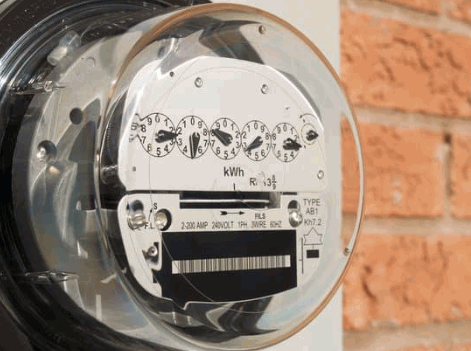
The electricity then goes to the fuse box where it feeds into the circuits that run around your home (or commercial property) to power appliances.
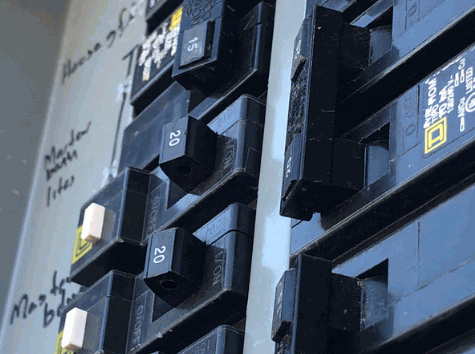
This step is optional (the system will work perfectly well without one) but it makes sense as you can use it to store excess electricity for when the solar panels aren't in operation at night. Instead of buying from an energy supplier, you can simply use up the extra electricity generated!
One thing to note is that solar battery storage has to be DC electricity, so it will be converted back again from an AC current. You can avoid this by having the battery connected before the solar inverter, then the electricity will be stored directly as DC.
In fairness, solar PV battery storage comes at a price, and you may need to set aside between £1,200 and £6,000 to invest in one, depending on the size. Even so, advances in photovoltaic technologies are steaming ahead, with new discoveries all the time. This will inevitably result in cheaper batteries and PV systems.
Also, the more electricity generated, the sooner you recoup the cost of the initial expense, and on very sunny days your solar PV system will produce electricity at well above average efficiency.
And that, essentially, is how a solar PV system works!
You've guessed it - it has to do with a popular heavy rock combo!
Let's unwrap these terms to see what it's all about:
AC = Alternating Current
DC = Direct Current
So, what's the difference?
Put simply, with DC electricity, the current only flows one way from negative to positive, while AC electricity flows both ways in a wave pattern that oscillates between positive and negative (at 50 hertz, meaning that it changes direction 50 times per second).
Some of the devices in your home will use the AC current without converting it, while others need to convert the current to DC electricity as the voltage will be too powerful.
Solar PV cells generate DC electricity (Direct Current), while in the UK our mains electricity supply is AC (Alternating Current) as it is easier to transport over long distances with minimal power loss.
Don't worry too much if you don't get it, it's really not that important as your solar panels do all the work - it's just good to know that AC and DC function differently and have different applications. The solar inverter (part of the photovoltaic system) turns the DC electricity into an AC current for use in your home or for battery storage.
A lot of myths and misunderstandings (and deliberate misinformation?) persist regarding solar power and renewable energy technologies in general.
One of these myths claims that solar panels don't work in poor light conditions, such as during bad weather or through the winter. The fact is that solar panels don't need direct sunlight in order to produce energy.
While they obviously operate at maximum efficiency on sunny days, they still continue to produce electricity in winter and on cloudy days.
Typically, solar PV systems have around ten panels, each generating around 335w of electricity on a sunny day.
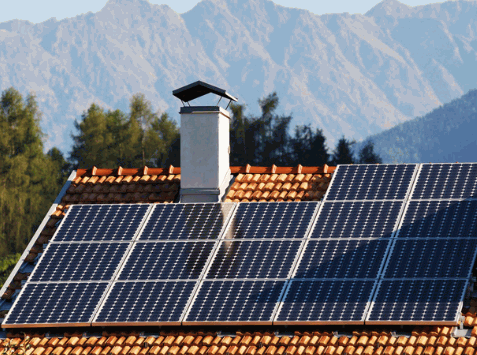
Now we come to the crunch - in the UK, solar photovoltaic panels are currently only able to convert between 15% and 22% of solar energy into usable electricity.
Now, that might come as a shock and a disappointment, but consider this; even at this seemingly low figure, they can still deliver all of your electricity needs daily for free, and any surplus electricity generated can be sold at a profit.
It all comes down to weighing the pros and cons, such as the cost of installing solar panels against the savings (and profit) you might make.
Also, photovoltaic technology is only going to improve over time, especially as more customers become interested in solar electricity. It's highly likely that this efficiency figure will rise dramatically.
In truth, this is the biggest sticking point when people are considering installing solar panels, even though the costs have fallen dramatically in recent years.
By its very nature, this technology is complex and requires specialist handling, so it's not a job to be rushed or completed by anyone who isn't trained and qualified.
Even so, it's well worth looking into solar electricity as there are significant savings to be made, as well as enormous benefits to the environment!
The key is to view this as a long-term investment; while the initial costs might seem high, you need to balance this against the savings over the next 25 years or so. And these can be huge.
The total cost of installation varies greatly, depending on a range of factors, such as the size of the array and the system size. For example, a 3kW solar PV array might cost between £5,000 and £6,000 but will potentially save around £21,000 over the next 25 years (or around £850 a year). However, a 6kW system may cost between £9,000 and £11,000, but will save you more than £1,400 per year on your electricity bills - that's in excess of £40,000 over 25 years!
Related post: “how much does a solar panel installation cost”.
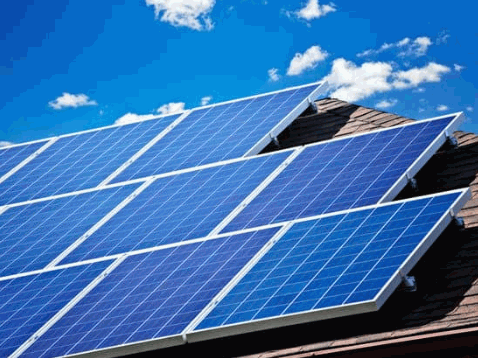
Understandably, some people are concerned about the maintenance and running costs.
The fact is that solar panels really don't need a lot of care once they've been installed. As long as they are inspected every three or four years and given a gentle wipe-down to remove dust and dirt, they'll usually keep generating electricity for years to come.
Most PV modules have a lifespan of as much as 40 years, so you can relax and let them keep generating electricity.
Should you invest in a solar PV system, it's in your best interests to also consider reducing your energy consumption as much as possible. By investing in a solar battery storage system, you can keep some of the energy for the nighttime when there's no sunlight and you'll be getting free energy during the daylight hours.
The less electricity you use, the lower your bills and the more electricity you can sell back to the energy companies. And with careful management, you can become 100% energy independent! The money you get from selling electricity will soon cover any initial costs.
The Smart Export Guarantee (SEG) scheme was implemented in January 2020 as part of the UK's commitment to reaching net-zero carbon emissions by 2050.
This scheme was set up to encourage homeowners to invest in renewable energy that produces excess electricity that can be sold back to the grid. A range of export tariffs is offered as an incentive to those who qualify for the scheme, and the solar PV system is one of the green energy options that is covered.
First, you have to choose a renewable energy source that's included. And as we said, solar photovoltaic systems tick that box. You could also have wind power, hydropower, anaerobic digestion, or micro-combine heat and power.
You also need an export meter that allows you to measure the amount of electricity flowing to the grid. For your convenience, it's a good idea to install a smart meter as this takes regular readings automatically (usually every 30 minutes) and sends these to the SEG licensee.
It doesn't really matter what type of solar PV system you have, but to qualify it must not exceed 5MW of electricity. This shouldn't be a problem for most people, as the typical domestic solar PV system is between 4kW and 6kW.
However, it is essential that your solar panels and installers are MCS certified. MCS stands for the microgeneration certification scheme, a self-regulating body that oversees renewable technologies and installations to ensure high industry standards.
While it's not a legal requirement for those installing solar panels to be MCS certified, you will not qualify for SEG unless they are.
It depends on which SEG licensee you use, what their tariff is, and how much solar electricity you sell back to them!
The Feed-in Tariff was a scheme introduced as an incentive to home and business owners to invest in renewable energy options, such as solar power. Like SEG, the FiT scheme paid for any excess electricity produced.
However, as the cost of these technologies began to fall, it was thought (rightly or wrongly) that they were affordable enough for the general public without government subsidies, and so the SEG scheme was brought in to replace FiT, which was completely phased out by January 2020.
The main difference between the two is that with SEG the energy companies set their own rates, resulting in a wider range of tariffs. So, it pays to shop around to see which company offers the best rate.
When you have your solar panels installed, it's up to you whether you want them connected to the national grid, or whether you'd prefer it to be an isolated system purely for your own use.
Each one has its pros and cons, so let's explore these to help you figure out which might be best for you.
On the plus side, you are free from the ever-rising energy bills as you are totally reliant on solar energy. You have complete control over your energy budget, bringing peace of mind and security.
However, these systems usually carry higher installation costs, as the array generally has to be bigger, and you need a larger inverter and battery storage. These are essential, as you won't have the grid to fall back on if your solar electricity supply runs short. In some cases, an emergency generator is recommended as well.
You'll also be more aware of how you use every bit of electricity produced!
On the whole, these off-grid setups are better suited for places where connection to power lines is difficult or expensive.
When you're connected to the grid, you always have an electricity supply. On days when you produce more electricity than you need, you can sell it to the grid. And if there's a shortfall, you can use electric power provided by the national grid to supplement your needs.
You'll need to have battery storage in order to sell your solar electricity back to the grid, which means an extra investment on your behalf.
In almost all cases, no planning permission is required for installing solar panels, whether it's a domestic solar PV system or solar thermal.
This is because the government changed the regulations regarding permitted developments.
However, there are a few exceptions -
If your property is within a registered conservation area (or World Heritage Site), you may have to get permission to install solar panels if they are to be fitted on principal walls that are visible from the highway. And if you own a listed building, you will most likely need listed building consent even if planning permission isn't required!
Either way, it's always best to check with your local authority before going ahead if your property falls into either of these categories - as they say, it's better to be safe than face a fine or have to have the solar PV system uninstalled, or both!
On standard private dwellings (i.e. private houses that aren't listed buildings) you must ensure that the panels don't project above the ridgeline of the roof, or project more than 200mm from a roof or wall surface.
This isn't usually a problem with sloping roofs, although it could be an issue when installing solar panels on a flat roof.
If you plan to install your array on the ground, you won't generally need permission unless:
Also, you can't put one inside the boundary of a listed building, and only one standalone array is permitted.
The rules regarding commercial buildings are pretty much the same as for domestic properties, although there are often legal grey areas over ownership and boundaries so you'll need to be absolutely certain of the facts before you have them fitted.
Many solar panel installation contractors will handle the issue of planning permission on your behalf, so always feel free to ask. At the very least, they'll be familiar with the process and will be able to advise you.
Heat pumps are another green option, as an alternative to a traditional boiler. Instead of relying on fossil fuels, they take heat from the air or ground to heat the home.
Millions of homeowners have had these fitted and are enjoying the benefits, especially in these times of eye-watering energy bills.
But which is the best option? Should you invest in a heat pump or PV system?
Overall, a heat pump can be more costly to install, although they are highly efficient and will significantly reduce your carbon footprint.
However, they only heat or cool your home, whereas a PV system will directly convert sunlight into electricity that you can use wherever it's needed. Potentially, that makes photovoltaic energy a more versatile option.
But here's a thought: why not combine the two? If you have the capital, it's well worthwhile investing in a heat pump and solar panels, as heat pumps require an electric current to work and solar cells can easily provide this without any problems.
Ultimately, it comes down to whether you want thermal energy or electricity generation.
And to a greater or lesser extent, it depends on your budget.
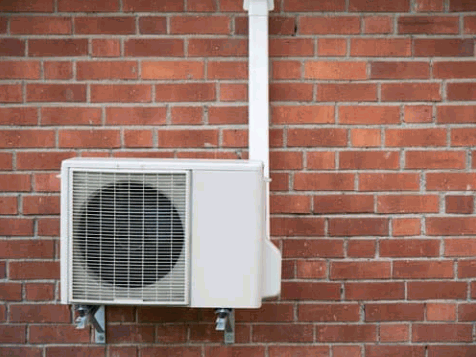
This is a significant factor in solar panel installation and effectiveness, even if it might seem like an odd question.
What do we mean by "suitable roof"?
Well, first of all, the direction your roof faces makes a lot of difference. For the very best results, your roof should be south-facing to make the most of the sun's rays throughout the day.
Ideally, it should be unshaded, meaning that the sun isn't blocked by other structures, trees or hills for most of the day.
The angle of your roof also matters: it should be between 30-45º for optimum results. Even so, the solar panels will still work, whatever the angle - even on a flat roof! This only applies to the UK, however: the optimum angle (and best direction) alters according to where you are situated on the globe.
You also need to take into account the age of your roof. If it's past its best and between 20 and 30 years old, you'll need to have it inspected to see if it is strong enough for the job. And if it's been installed in the last 15 years or so, it will still need inspecting for any damage. Repairs will have to be completed before the solar panels are installed.
Finally, the type of roofing material makes a difference in terms of cost as well as suitability. The best material, from the installer's point of view, is asphalt shingles as they are easy to attach the panels to. The contractor can simply drill holes, attach the solar panel array, and place metal flashing around the holes to stop water from leaking through into the roof space.
Concrete or clay tiles also fit in with the suitable roof criteria, but they can add to the installation cost as they are more tricky to work with. The contractors usually have to remove tiles rather than drill through them as they are brittle and may crack. The solar panels are instead fitted to the wooden rafters beneath, then the tiles are replaced. As you can guess, this increases the time taken which adds to the cost.
Roofing felt or gravel and tar are mostly found on flat roofs, and these are also suitable for solar panels. Some installers might suggest securing the panels to cinder blocks instead. The main downside of fitting solar panels on a flat roof is that you will almost certainly need to get planning permission as the array will probably rise more than 0.2 metres above the roof slope. That's because these panels are set in a frame to achieve the 30 or 40º angle to catch the sun's rays.
The good news is that installation on flat roofs is generally quicker and easier, so the costs will be lower.
What about wooden roofs? Well, here we have some not-so-good news: most contractors won't consider fitting solar panels to a wooden roof. This is partly because of concerns about fire safety, but also because wooden tiles can easily split as they are not designed to take the weight.
As for thatched roofs, you can probably guess that this wouldn't be a viable option. To begin with, this is a traditional method that looks appealing and often has decorative details. Placing solar panels over the top would ruin the effect, as well as present a fire hazard. Also, there's nothing to attach them to, and the thatch would rot due to being in constant shade.
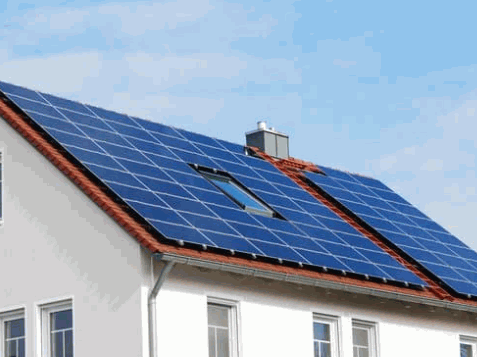
It could very well be. In fact, it's astonishing that we haven't taken advantage of solar energy long before now.
Here's a fact that will blow your mind:
The amount of sunlight that hits our planet every 90 minutes is enough to provide all the energy needs of the entire world for a whole year.
We'll just let that sink in for a moment.
That's quite a statement, isn't it? And when you combine this with wind and wave power, there's every chance that we could end fossil fuel reliance within a very short time.
In the end, it comes down to how seriously we take climate change. Of course, your personal financial circumstances play a big role, but if you can afford to reduce your carbon footprint and save money in the long term on energy bills by investing in solar energy, it makes good economical and ecological sense.
So now you know how solar panels work. You've seen that they used the sun's energy to generate electricity using solar cells in PV modules.
In fact, we've given you a lot of information to consider! It's now up to you to digest this and weigh up the pros and cons.
If you need any further information about Solar PV systems, or have any concerns about the process or need any advice on the costs involved, feel free to contact Skylamp Solar at any time.
As experts in solar panels and renewable energy, we believe that this technology presents an alternative way forward that doesn't cost the Earth.